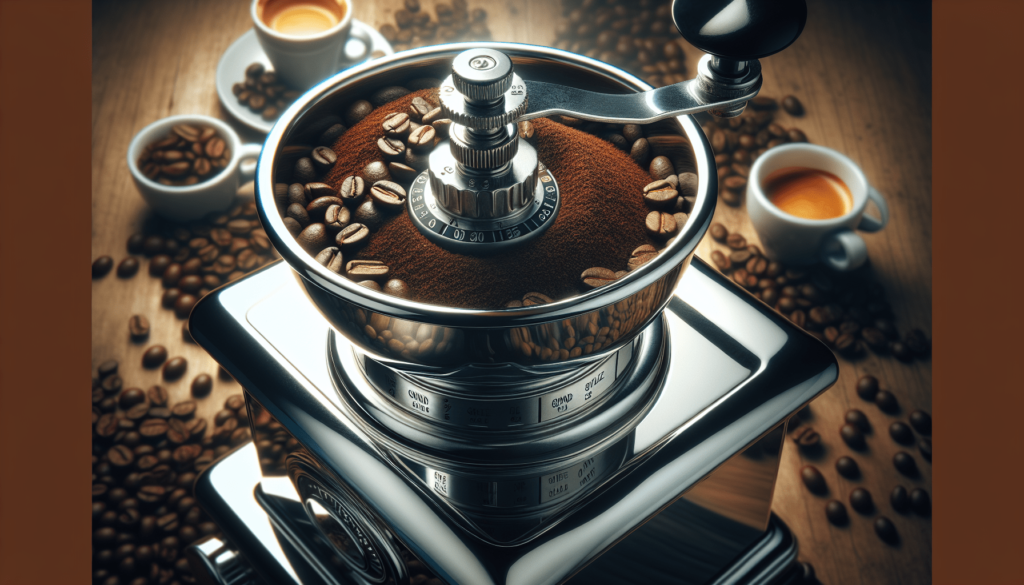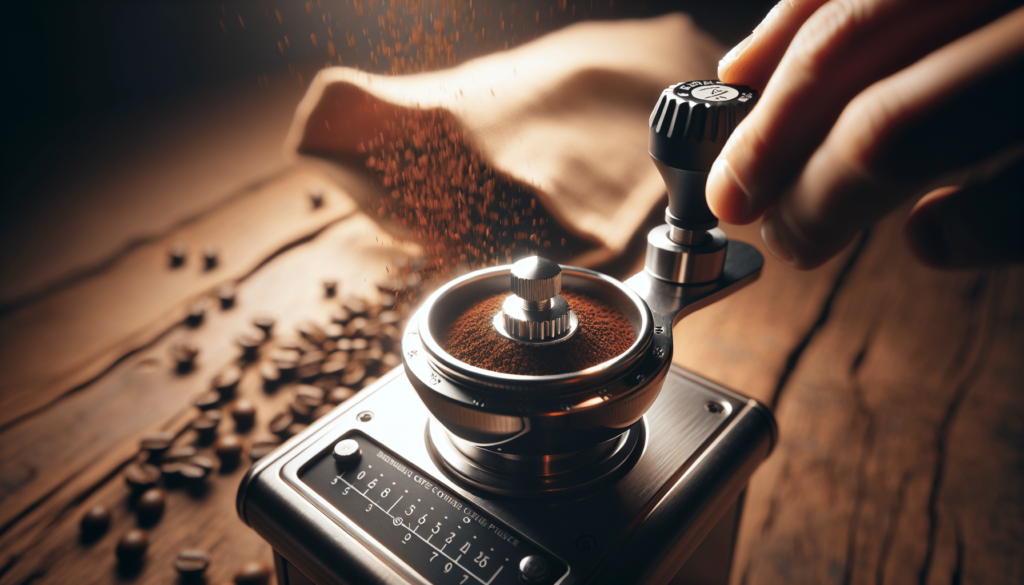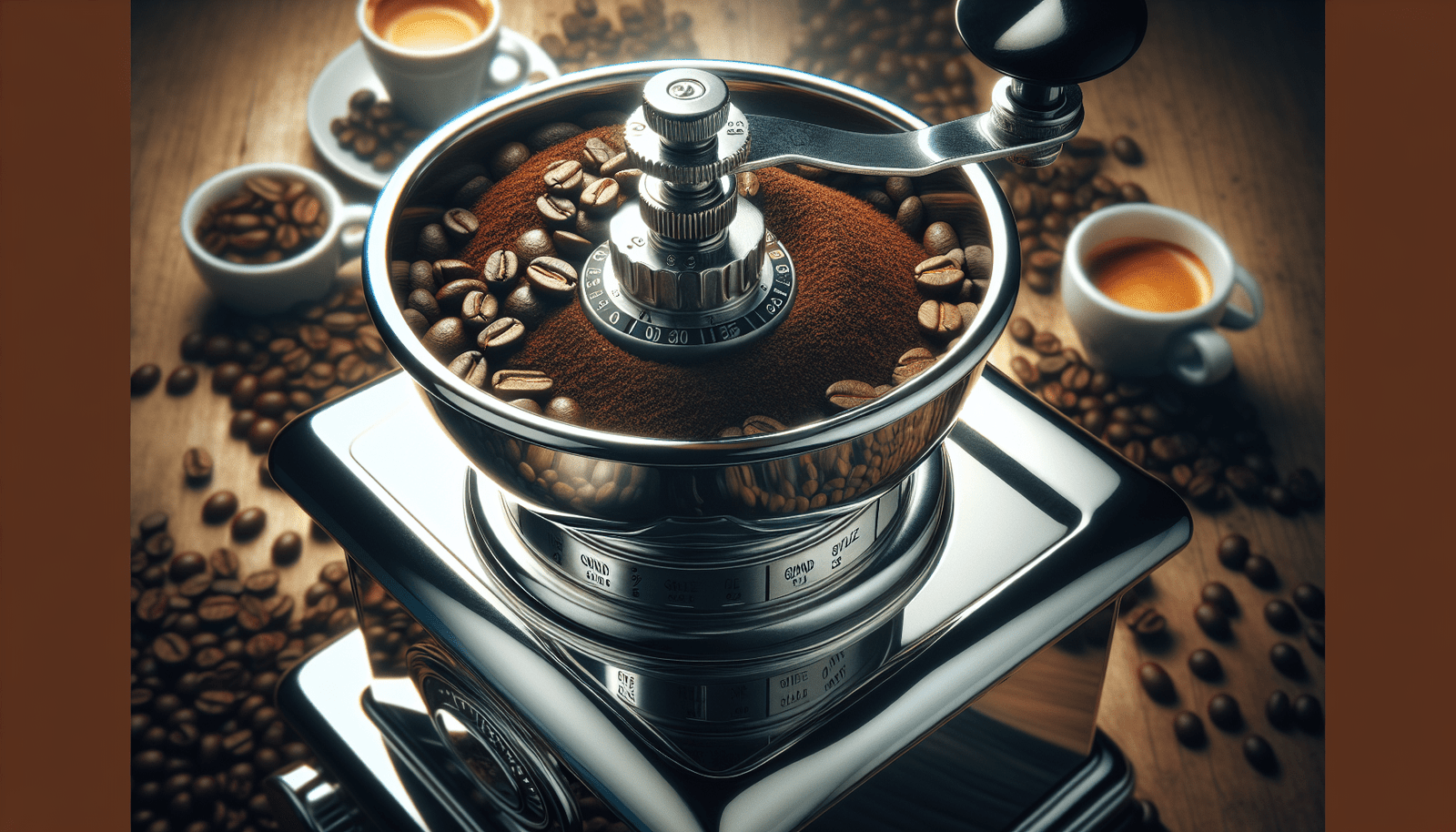Whether you’re a coffee enthusiast or a professional barista, understanding how to adjust your grinder for different espresso bean profiles is essential to unlocking the perfect cup of coffee. With each type of espresso bean having its own unique characteristics and flavor notes, it’s crucial to have the knowledge and skills needed to properly adjust your grinder to extract the best possible flavors. In this article, we will explore the step-by-step process of adjusting your grinder, ensuring that you can confidently and effectively produce exceptional espressos every time. So grab your favorite blend, and let’s dive into the world of grinder adjustments!
Understanding Espresso Bean Profiles
Espresso, undoubtedly a favored choice for coffee enthusiasts, is made from espresso beans that come in various types. Each type of espresso bean, whether it’s Arabica, Robusta, or a blend of the two, has its own distinct characteristics that contribute to the final taste of your espresso. Understanding these different types of espresso beans is essential in creating the perfect brew that suits your preferences.
Different Types of Espresso Beans
Arabica beans are known for their delicate and nuanced flavors. They generally have a higher acidity level and a wider range of flavors, from fruity to floral notes. Robusta beans, on the other hand, have a higher caffeine content and a more bold and bitter taste. Blends combine the best attributes of both Arabica and Robusta beans, striking a balance that is both flavorful and caffeinated.
Factors That Influence Bean Profiles
The characteristics of espresso beans are influenced by various factors. The altitude at which the beans are grown, the type of soil, the climate, the processing method, and even the roasting technique – all play a significant role in shaping the flavor profile of the beans. It’s fascinating to explore how different growing regions or processing methods can create distinct tastes and aromas in your cup of espresso.
Why Adjusting Grinder Is Important
The grinder is a crucial component in the process of making espresso. It determines the size and consistency of the coffee grounds, which directly affects the extraction and ultimately the flavor of your espresso. Adjusting the grinder properly allows you to control the extraction process and optimize the taste. It may seem like a small detail, but it makes a world of difference in the quality of your brew.

Grinder Basics
To understand how to adjust your grinder for different espresso bean profiles, it’s important to first familiarize yourself with its components. An espresso grinder typically consists of a hopper, where the beans are loaded, and a grinding chamber, where the beans are ground into particles. The grind size is adjusted using the grind size dial or knob. Burr grinders, which have two abrasive surfaces, are typically favored over blade grinders for espresso preparation due to their ability to produce a more consistent grind.
Burr vs Blade Grinders
Burr grinders are renowned for their ability to produce uniform coffee particles, allowing for even extraction of flavors. Blade grinders, on the other hand, chop the beans unevenly, resulting in an inconsistent grind size. This inconsistency can lead to an uneven extraction, resulting in a mediocre cup of espresso. Investing in a burr grinder is a wise decision if you’re serious about your espresso journey.
Grind Size and Its Impact on Extraction
The size of the coffee particles, commonly referred to as grind size, is a critical factor in determining the overall flavor profile of your espresso. Finer grinds generally extract more quickly, resulting in a stronger and more intense flavor. Conversely, coarser grinds lead to a slower extraction, producing a milder flavor. Understanding the impact of grind size on extraction is key to achieving the perfect balance in your cup of espresso.
Grinder Adjustments
When it comes to adjusting your grinder for different espresso bean profiles, you have two main options: stepless grinders and stepped grinders. Stepless grinders offer infinite adjustment options, allowing you to fine-tune the grind size with precision. Stepped grinders, on the other hand, have pre-set grind size options that you can easily switch between.
Doser vs Doserless Grinders
Espresso grinders also come in doser and doserless options. Doser grinders dispense a pre-measured amount of coffee into a dosing chamber, which can be convenient for faster-paced environments. Doserless grinders, on the other hand, grind the coffee directly into the portafilter, offering more control over the grind size and reducing waste.
Initial Grinder Setting for Espresso
When starting with a new batch of espresso beans, it’s vital to find the right initial grinder setting. Begin with a medium-fine grind size and make adjustments as necessary. The goal is to achieve a consistent extraction time and a well-balanced flavor profile. Remember, it may take some trial and error to dial in the perfect grind setting for each type of espresso bean.

Recognizing the Bean Profile
To fully understand the nuances of different espresso bean profiles, it’s essential to develop your sensory skills in identifying various bean characteristics. Take a close look at the beans – their color, shape, and size can give you clues about their roast level and potential flavor profiles. A light roast may be pale and have a more acidic taste, while a dark roast will appear oily and have a richer, bolder flavor.
Roast Level and Its Impact on Extraction
The roast level of espresso beans has a significant impact on the extraction process. Lighter roasts are generally more acidic and have a brighter taste, while darker roasts offer a more robust and bitter experience. Understanding the roast level of your beans will guide you in adjusting your grinder to optimize the extraction, ensuring the best possible flavor in your cup of espresso.
Tasting Espresso Flavors
Tasting espresso is an art in itself, as it allows you to appreciate the range of flavors that each espresso bean profile can offer. As you sip your espresso, pay attention to its body, acidity, aroma, and aftertaste. Is it fruity and vibrant, or deep and chocolaty? The ability to recognize these flavors will not only enhance your espresso experience but also help you adjust your grinder to achieve your desired taste.
Finding the Right Grind Size
To achieve the perfect extraction, it’s crucial to find the right grind size for each espresso bean profile you’re working with. Coarser grinds tend to work well with lighter roast beans, allowing for a longer extraction time and a more balanced flavor. Finer grinds, on the other hand, are better suited for darker roast beans, as they increase the rate of extraction and intensify the flavors.
Adjusting for Coarse vs Fine Grind
To adjust your grinder for a coarser grind, simply move the grind size dial or knob to a higher number. For a finer grind, move it to a lower number. It’s essential to make small incremental adjustments and then test the extraction until you achieve the desired flavor profile. Remember that even slight changes in the grind size can have a significant impact on the final taste of your espresso.
Testing Extraction Time
Extraction time refers to the duration it takes for water to pass through the coffee grounds during the brewing process. A standard extraction time for espresso is typically between 25 to 30 seconds. If the extraction is too fast, resulting in a weak and under-extracted shot, you may need to adjust to a finer grind size. On the other hand, if the extraction is too slow, leading to a bitter and over-extracted shot, a coarser grind size might be necessary.
Dialing in the Grind Size
Dialing in the grind size requires patience and a touch of experimentation. Start with an initial grind size based on the roast level of the beans, and then make slight adjustments until you find the sweet spot that delivers the optimal flavors. Keep notes on each adjustment you make to track the changes and make it easier to replicate the perfect grind size in the future.
Adapting to Different Bean Profiles
To truly appreciate the diversity of espresso, you must be open to exploring the different bean profiles available. Here’s a brief overview of how to adjust your grinder for each type of espresso bean:
Light Roast Beans: Lighter roasts are more delicate, often requiring a coarser grind to avoid overpowering the flavors. Adjust your grinder accordingly, and carefully monitor the extraction time to avoid under-extraction.
Medium Roast Beans: Medium roasts offer a balanced flavor profile, making them more forgiving when it comes to grinder adjustments. Start with a medium-fine grind and make small tweaks as needed.
Dark Roast Beans: Darker roasts are bold and intense, requiring a finer grind to extract the maximum flavors. Take care not to grind too fine or the extraction may become bitter.
Blended Beans: Blended beans combine different types of espresso beans, creating a unique flavor profile. Experiment with different grind sizes to find the right balance that highlights the best characteristics of each bean.
Tips for Consistent Grinding
Consistency is key when it comes to achieving the perfect grind for your espresso. Here are some tips to ensure consistent grinding:
Maintaining Grinder Cleanliness: Regularly clean your grinder to remove any remaining coffee particles, oils, or residue. This will prevent clogging and ensure that the coffee is ground evenly.
Calibrating or Aligning Burrs: Over time, the burrs in your grinder may become misaligned, affecting the grind quality and consistency. Consider calibrating or aligning your burrs periodically to maintain optimal performance.
Keeping Track of Adjustments: It’s essential to keep track of your grinder adjustments, especially when working with different bean profiles. Take note of the grind size, extraction time, and flavor characteristics to easily replicate your favorite brews.
Experimenting with Extraction
As you become more familiar with adjusting your grinder, don’t be afraid to experiment with different extraction techniques. Here are some variables you can play with to fine-tune your espresso:
Understanding the Coffee-to-Water Ratio: The ratio of coffee to water can greatly influence the strength and intensity of your espresso. Experiment with different ratios to find the perfect balance that suits your taste preferences.
Adjusting Extraction Time: As mentioned earlier, the extraction time plays a crucial role in determining the flavors and characteristics of your espresso. Try adjusting the extraction time within the recommended range to bring out different qualities in your cup.
Using a Refractometer: For the more scientifically inclined coffee enthusiasts, using a refractometer can provide precise measurements of the total dissolved solids in your espresso. This allows you to objectively measure the extraction and adjust your grinder accordingly.
Troubleshooting
Even with the best techniques, troubleshooting may be necessary at times. Here are some common issues you may encounter and tips to address them:
Getting Over-Extracted Espresso: If your espresso tastes bitter or harsh, it is likely over-extracted. Try using a coarser grind size to decrease the extraction time and balance out the flavors.
Dealing with Under-Extracted Shots: Weak and sour-tasting espresso often indicates under-extraction. Adjust your grinder to a finer grind size to increase extraction time and achieve a fuller flavor.
Addressing Inconsistent Shots: Inconsistent coffee grounds or variations in tamping pressure can lead to inconsistent shots. Ensure that your grinder is properly calibrated and that you consistently apply the same pressure when tamping the coffee.
Final Thoughts
Adjusting your grinder for different espresso bean profiles is a skill worth developing for any coffee lover. With practice, you’ll gain a deeper understanding of the impact that grind size, extraction time, and bean characteristics have on the final flavor of your espresso. Remember to enjoy the journey of exploration, and don’t be afraid to experiment with different variables. Each cup of espresso offers a new opportunity to create a delightful and personalized brewing experience.

